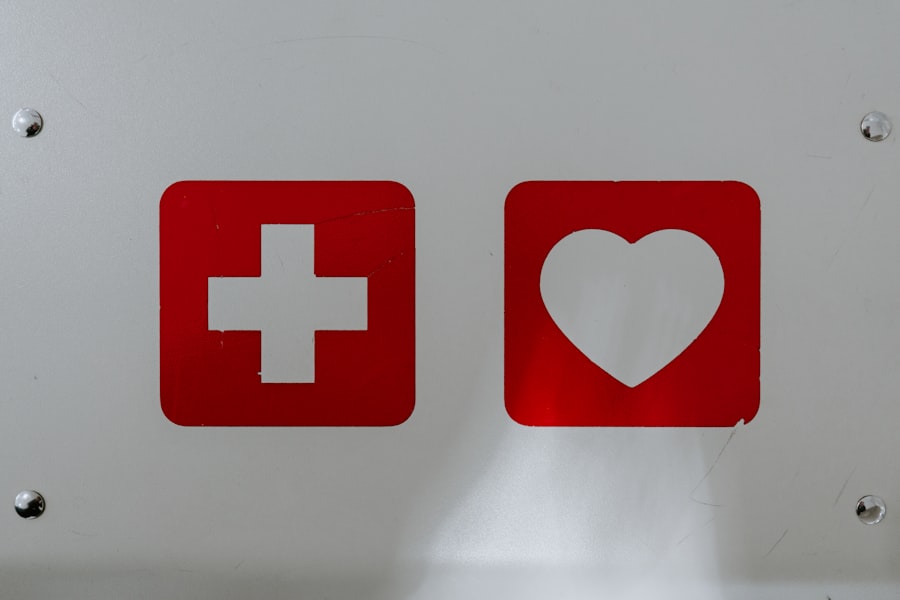Healthcare engagement is a multifaceted concept that encompasses the ways in which healthcare providers interact with patients, stakeholders, and the broader community. In an era where patients are increasingly empowered and informed, the significance of engagement cannot be overstated. Engaging patients effectively can lead to improved health outcomes, higher patient satisfaction, and increased loyalty to healthcare providers.
When patients feel involved in their care, they are more likely to adhere to treatment plans, attend follow-up appointments, and maintain open lines of communication with their healthcare teams. This engagement is not merely a trend; it is a fundamental shift in how healthcare is delivered and experienced. Moreover, healthcare engagement extends beyond the individual patient-provider relationship.
It encompasses community outreach, public health initiatives, and educational campaigns that aim to inform and empower populations. For instance, organizations that actively engage with their communities can better understand the unique health challenges faced by different demographics. This understanding allows for tailored interventions that address specific needs, ultimately leading to healthier communities.
The importance of healthcare engagement lies in its ability to foster a collaborative environment where patients feel valued and heard, thereby enhancing the overall effectiveness of healthcare delivery.
Key Takeaways
- Healthcare engagement is crucial for improving patient outcomes and organizational success.
- Social media is a powerful tool for healthcare marketing and patient communication.
- Building a strong online presence helps healthcare organizations connect with their audience effectively.
- Creating relevant and engaging content is key to capturing the attention of healthcare consumers.
- Utilizing social media analytics enables data-driven decisions to enhance marketing strategies.
Leveraging Social Media for Healthcare Marketing
Social media has revolutionized the way healthcare organizations communicate with their audiences. Platforms such as Facebook, Twitter, Instagram, and LinkedIn provide unique opportunities for healthcare marketers to reach a diverse range of consumers. By leveraging these platforms, healthcare organizations can disseminate valuable information, promote services, and engage with patients in real-time.
For example, a hospital might use Facebook Live to host Q&A sessions with medical professionals, allowing patients to ask questions about specific health concerns or procedures. This not only provides immediate value but also humanizes the organization by showcasing its staff’s expertise and approachability. Additionally, social media allows for targeted marketing strategies that can reach specific demographics based on interests, location, and behavior.
For instance, a pediatric clinic could create content tailored to new parents, offering tips on child health and development while promoting its services. By utilizing social media advertising tools, healthcare organizations can ensure that their messages reach the right audience at the right time. This targeted approach not only increases the effectiveness of marketing campaigns but also enhances patient engagement by providing relevant content that resonates with specific groups.
Building a Strong Online Presence for Healthcare Organizations

A robust online presence is essential for healthcare organizations seeking to thrive in today’s digital landscape. This presence begins with a well-designed website that serves as the cornerstone of an organization’s online identity. A user-friendly website should provide essential information such as services offered, physician bios, appointment scheduling options, and educational resources.
Moreover, it should be optimized for search engines to ensure that potential patients can easily find the organization when searching for healthcare services in their area. Beyond the website, healthcare organizations must also establish a presence on various social media platforms. Each platform offers unique advantages; for instance, Instagram is ideal for sharing visual content such as infographics and patient success stories, while LinkedIn can be used to connect with other professionals and share industry insights.
Consistency across these platforms is crucial; organizations should maintain a cohesive brand voice and visual identity to reinforce recognition and trust among their audience. By actively engaging with followers through regular posts, comments, and direct messages, healthcare organizations can cultivate a loyal online community that feels connected to their mission and values.
Creating Engaging Content for Healthcare Audiences
| Metric | Description | Target Value | Importance |
|---|---|---|---|
| Audience Engagement Rate | Percentage of healthcare audience interacting with content (likes, shares, comments) | 15% or higher | High |
| Content Readability Score | Flesch-Kincaid Grade Level for healthcare content clarity | 8th Grade or below | High |
| Average Time on Page | Average duration healthcare professionals spend reading content | 3 minutes or more | Medium |
| Click-Through Rate (CTR) | Percentage of users clicking on call-to-action links within healthcare content | 5% or higher | High |
| Content Sharing Rate | Frequency of healthcare content being shared across professional networks | 10% or higher | Medium |
| Conversion Rate | Percentage of healthcare audience completing desired actions (e.g., sign-ups, downloads) | 3% or higher | High |
| Content Accuracy | Percentage of content reviewed and verified by healthcare experts | 100% | Critical |
| Mobile Accessibility | Percentage of content optimized for mobile devices | 100% | High |
Content creation is at the heart of effective healthcare marketing. Engaging content not only informs but also inspires action among audiences. Healthcare organizations should focus on producing a variety of content types to cater to different preferences and learning styles.
For instance, blog posts can delve into complex medical topics in an accessible manner, while videos can demonstrate procedures or share patient testimonials that resonate emotionally with viewers. Infographics are particularly effective for distilling complex information into easily digestible visuals that can be shared across social media platforms. Moreover, storytelling plays a pivotal role in creating engaging content.
By sharing real-life patient experiences or highlighting community health initiatives, organizations can foster emotional connections with their audience. For example, a cancer treatment center might share a video series featuring patients discussing their journeys through treatment and recovery. This not only humanizes the organization but also provides hope and encouragement to others facing similar challenges.
By prioritizing authenticity and relatability in content creation, healthcare organizations can build trust and encourage ongoing engagement from their audiences.
Utilizing Social Media Analytics for Healthcare Marketing
In the realm of healthcare marketing, data-driven decision-making is paramount. Social media analytics provide valuable insights into audience behavior, preferences, and engagement levels. By analyzing metrics such as likes, shares, comments, and click-through rates, healthcare organizations can gauge the effectiveness of their content and campaigns.
For instance, if a particular post about flu prevention receives significantly higher engagement than others, it may indicate a strong interest in that topic among the audience. This insight can inform future content strategies and help organizations tailor their messaging to better meet the needs of their followers. Furthermore, social media analytics can assist in identifying trends over time.
By tracking engagement patterns across different demographics or geographic locations, healthcare organizations can refine their targeting strategies and optimize their marketing efforts. For example, if analytics reveal that younger audiences are more engaged with mental health content on Instagram than older demographics on Facebook, organizations can adjust their strategies accordingly. This data-driven approach not only enhances marketing effectiveness but also ensures that resources are allocated efficiently to maximize impact.
Establishing Trust and Credibility through Social Media

Trust is a cornerstone of effective healthcare engagement. In an age where misinformation can spread rapidly online, establishing credibility through social media is more important than ever. Healthcare organizations must prioritize transparency in their communications by providing accurate information backed by reputable sources.
Sharing research findings, expert opinions, and evidence-based practices can help position an organization as a trusted authority in its field. Additionally, engaging with followers in a genuine manner fosters trust and credibility. Responding promptly to questions or concerns demonstrates that an organization values its audience’s input and is committed to providing quality care.
For instance, if a patient shares a concern about a recent experience on social media, addressing it publicly shows accountability and a willingness to improve. Furthermore, showcasing staff expertise through regular posts about medical advancements or community involvement reinforces an organization’s commitment to excellence in care.
Engaging with Patients and Healthcare Consumers
Engagement goes beyond one-way communication; it involves fostering meaningful interactions between healthcare organizations and their audiences. Social media provides an ideal platform for this type of engagement through features such as polls, surveys, and interactive content. For example, a healthcare organization might create a poll asking followers about their preferred topics for future educational content or invite them to share their health journeys using a specific hashtag.
This not only encourages participation but also provides valuable insights into patient interests. Moreover, creating opportunities for dialogue enhances patient engagement significantly. Hosting live Q&A sessions or webinars allows patients to ask questions directly to healthcare professionals in real-time.
This interactive format not only empowers patients but also positions the organization as approachable and knowledgeable. Additionally, encouraging user-generated content—such as testimonials or success stories—can further strengthen community ties and foster a sense of belonging among patients.
Adapting to the Changing Landscape of Healthcare Marketing
The landscape of healthcare marketing is continually evolving due to technological advancements and shifting consumer expectations. As telehealth becomes more prevalent and digital health tools gain traction, healthcare organizations must adapt their marketing strategies accordingly. Embracing new technologies such as virtual reality for patient education or utilizing chatbots for appointment scheduling can enhance patient experiences while streamlining operations.
Furthermore, staying attuned to emerging trends in consumer behavior is essential for effective marketing in the healthcare sector. As patients increasingly seek personalized experiences tailored to their unique needs and preferences, organizations must leverage data analytics to deliver targeted messaging that resonates with individuals on a personal level. This adaptability not only ensures relevance in an ever-changing market but also positions healthcare organizations as forward-thinking leaders committed to meeting the evolving needs of their patients.
In conclusion, navigating the complexities of healthcare engagement requires a multifaceted approach that leverages social media effectively while prioritizing trust and credibility. By building strong online presences and creating engaging content tailored to diverse audiences, healthcare organizations can foster meaningful connections with patients and consumers alike. As the landscape continues to shift, embracing innovation and adaptability will be key to thriving in this dynamic environment.



